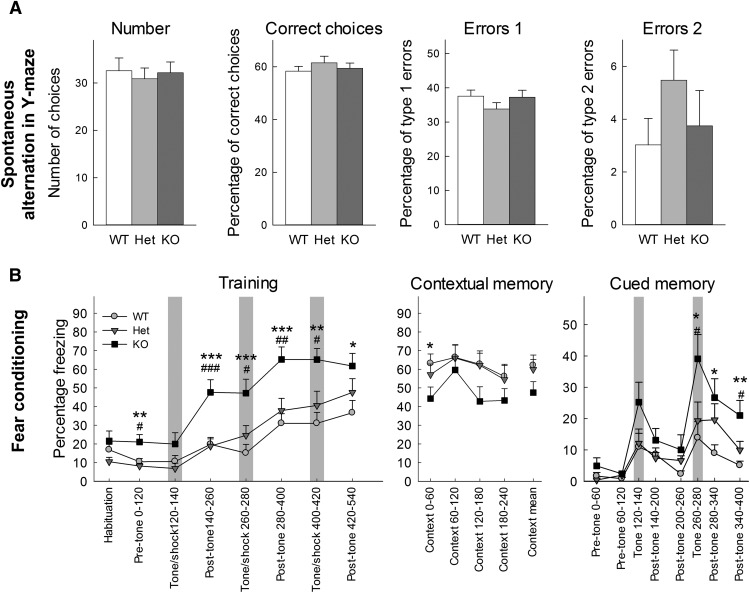Figure 9.
Learning and memory in Shank3Δ4-22-deficient mice. A, Working memory in Y-maze measured by spontaneous alternation behavior. All genotypes showed comparable number of arm choices, percentage of correct choices (three-way alternation), type 1 error (three consecutive choices where the first and third choices are identical), or type 2 error (three consecutive choices where the second and third choices are identical). B, Contextual and cued fear conditioning in Shank3 mice. A higher percentage of freezing was observed in Shank3Δ4-22 homozygous mice compared to wild-type and heterozygous animals on day 1. While the difference was already present before the sound-shocks associations, it was strongly increased posttraining. No genotype differences were detected in freezing scores in the posttraining session on day 1. Opposite results were observed for contextual conditioning (day 2) and cued conditioning (day 3): Shank3Δ4-22 homozygous mice showed an impairment of contextual learning compared to their wild-type and heterozygous littermates but an enhancement of freezing postcues during the cued testing. WT, wild-type mice; Het, heterozygous mice; KO, homozygous knock-out mice. *: WT versus KO; #: Het versus KO. *p < 0.05, **p < 0.1, ***p < 0.001.

